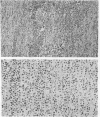Abstract
Chickens of various age levels, free from prior infection, were simultaneously exposed to Marek's disease virus, and the response of each age group was recorded. Four- and 20-week-old chickens of lines 15×7 and CM (commercial source) had substantial resistance to mortality and gross lesions. In contrast, in line 7, which was tested at 1-day, 2-, 4-, 8-, 12- and 16-week age levels, 4-week-old chickens were fully susceptible to clinical Marek's disease (MD), although resistance was demonstrated at 8-week and older age levels. Genetically resistant chickens of line 6 maintained their resistance at all age levels tested. Pathogenesis of MD was compared in 12-week-old and 1-day-old chickens of line 15×7. Within the 1-day-old group, 23% of the chickens died because of MD, whereas there were no deaths in the 12-week-old group. Both groups developed viremia although duration, incidence, and levels of virus in the 1-day-old group were higher than in the 12-week-old group. Although initially the 12-week-old group responded by producing higher levels of antibody, the long term incidence of agar gel precipitin, immunofluorescent, and virus neutralization antibody in the two groups was similar. Gross and microscopic lesions of MD developed in both groups, but lesions regressed in the 12-week-old group and persisted in the 1-day-old group. It was concluded that age resistance to MD was expressed through lesion regression.
Full text
PDF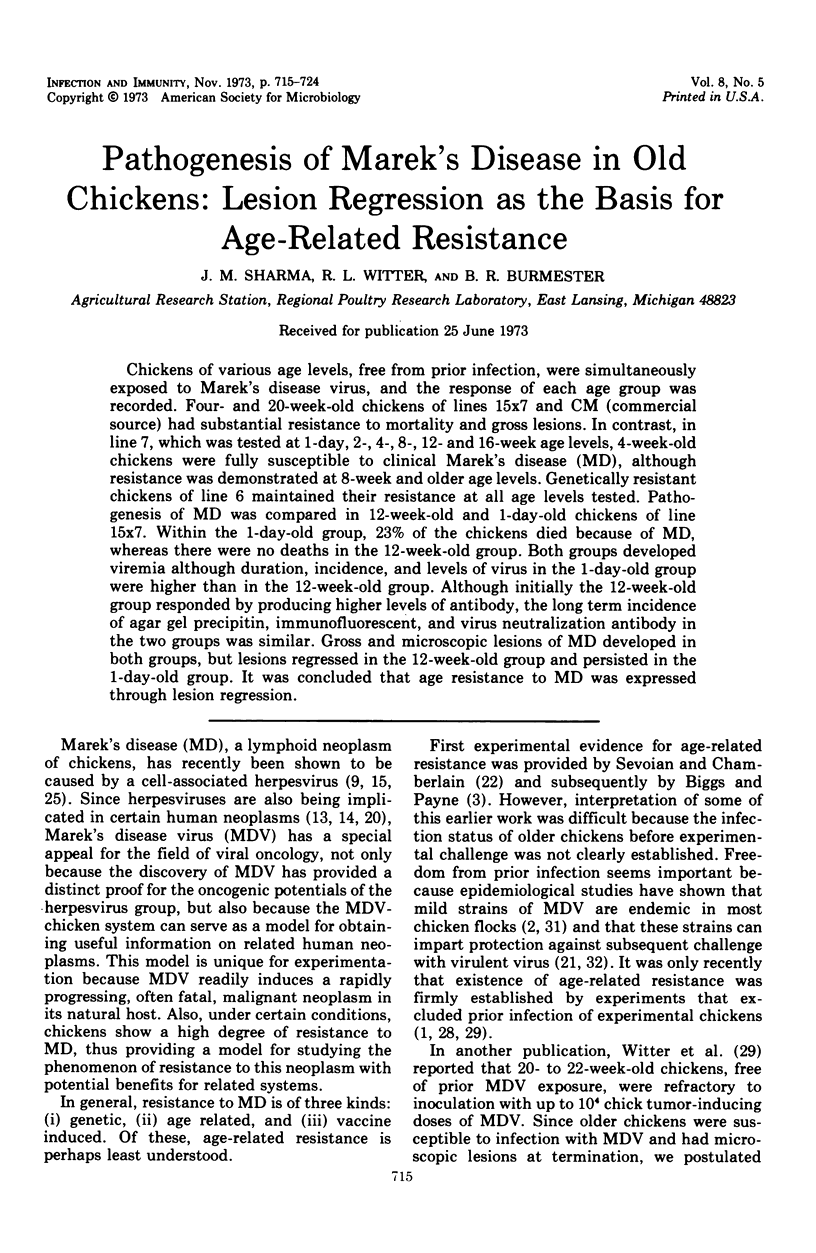
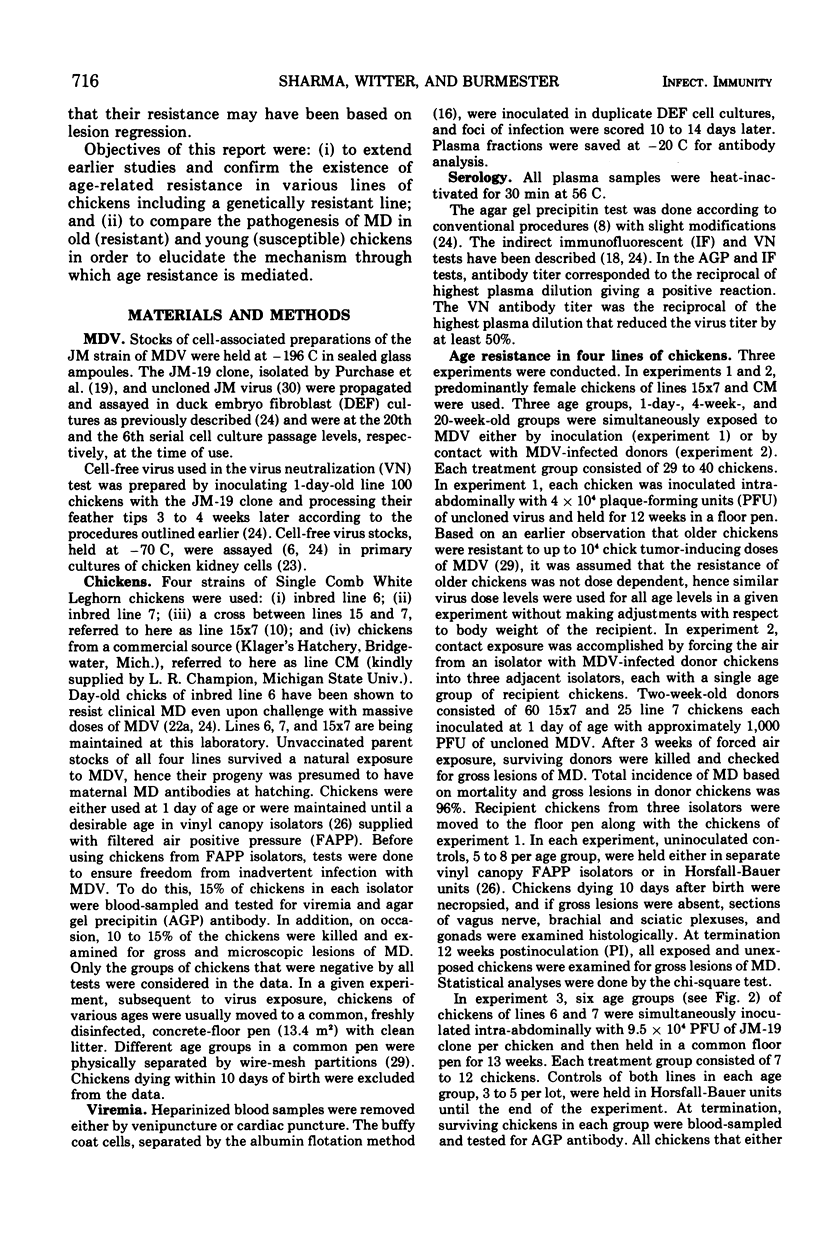
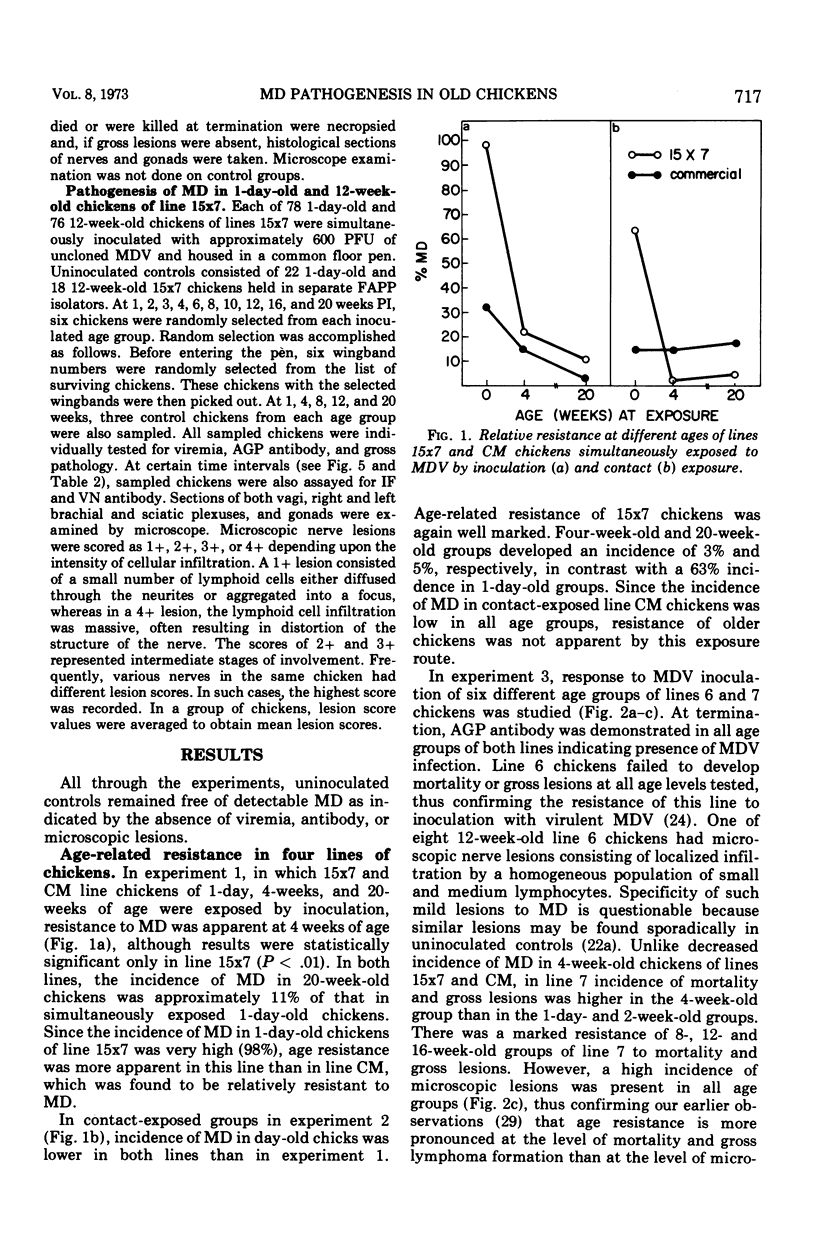

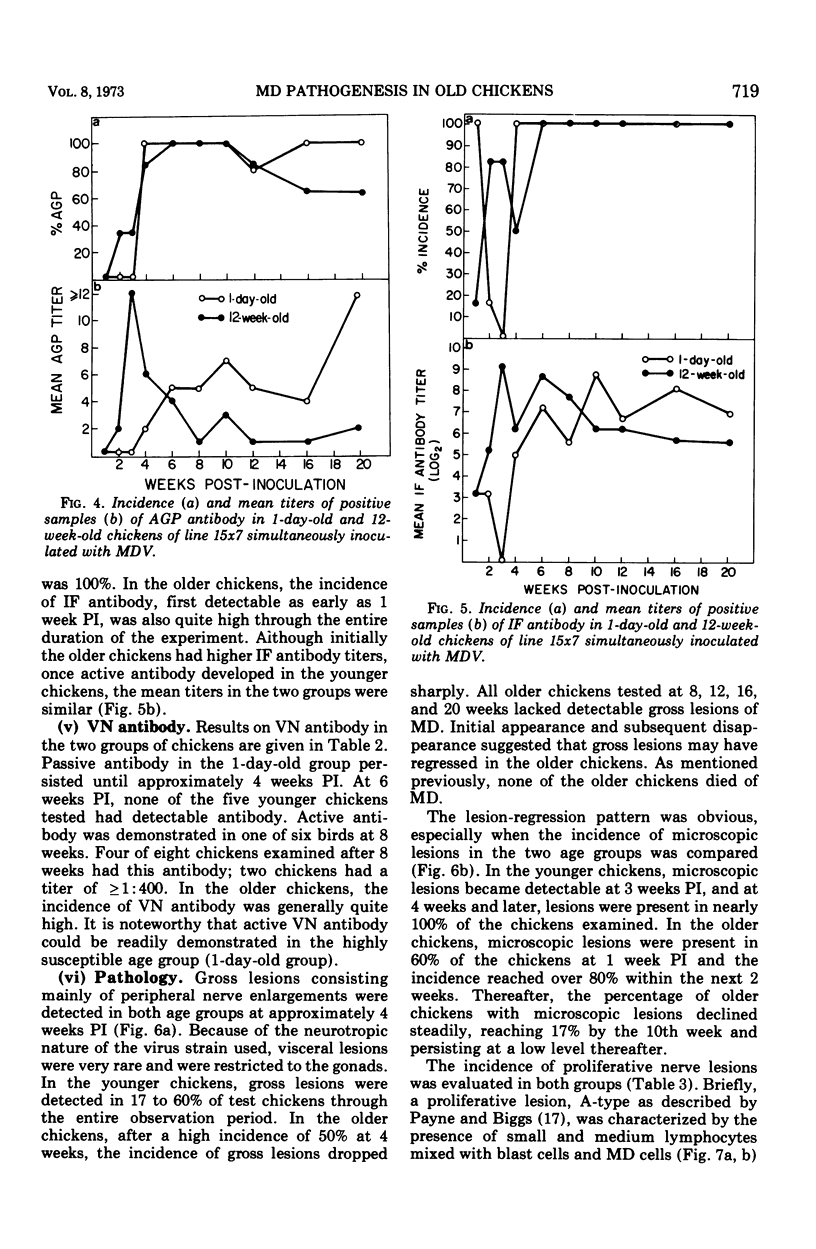
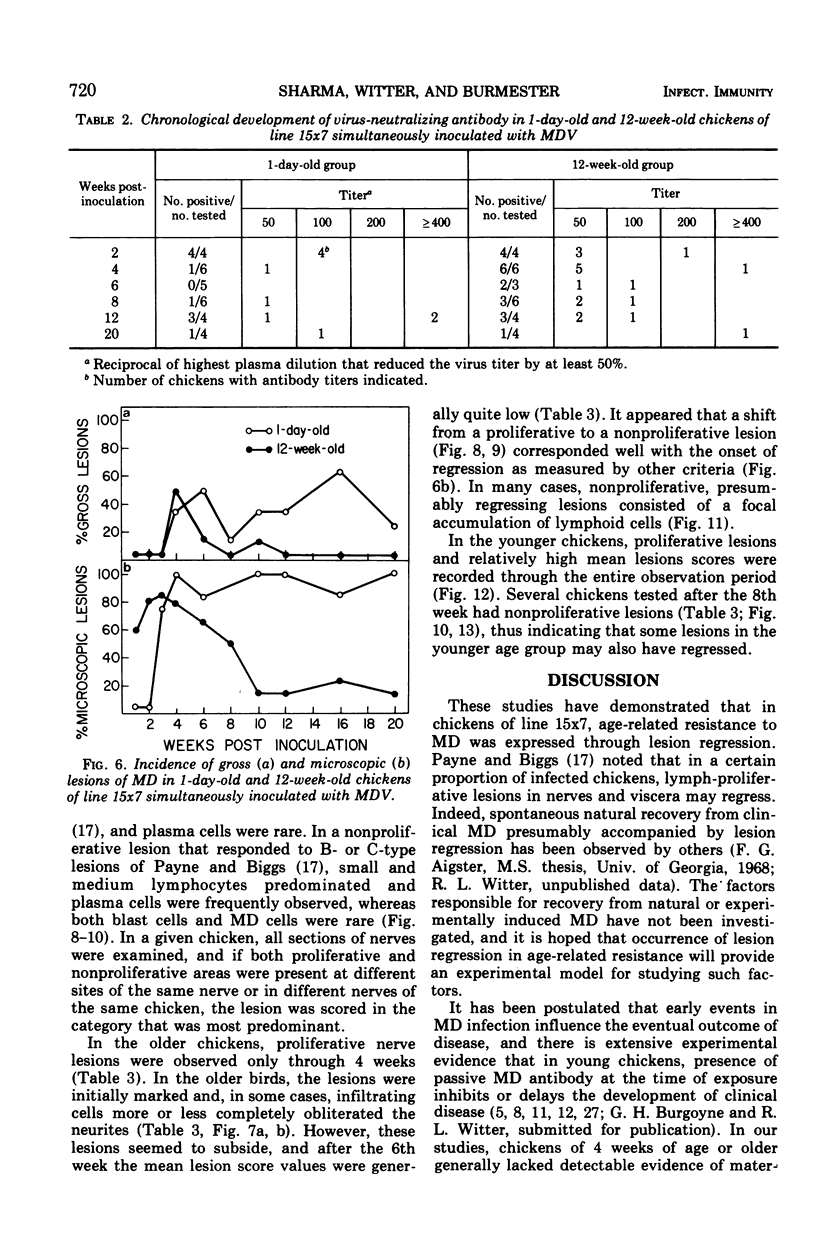
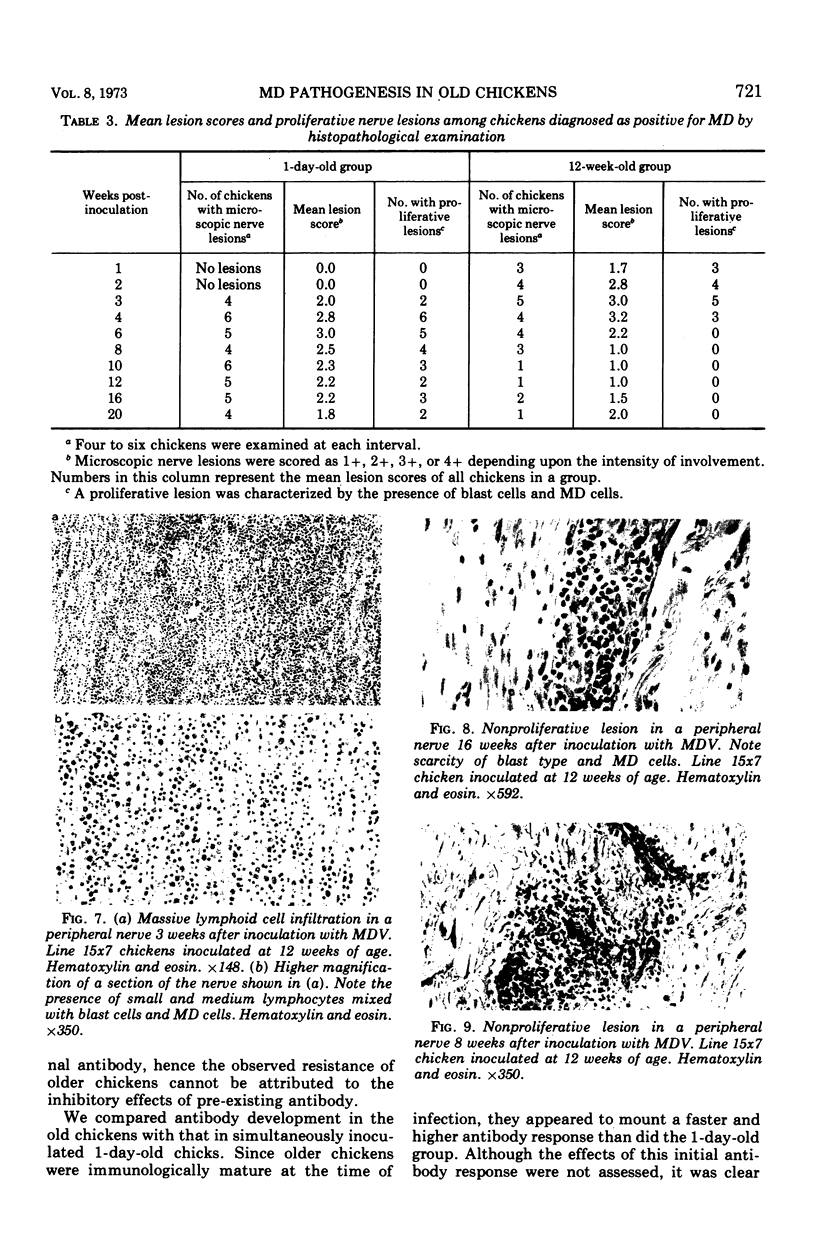
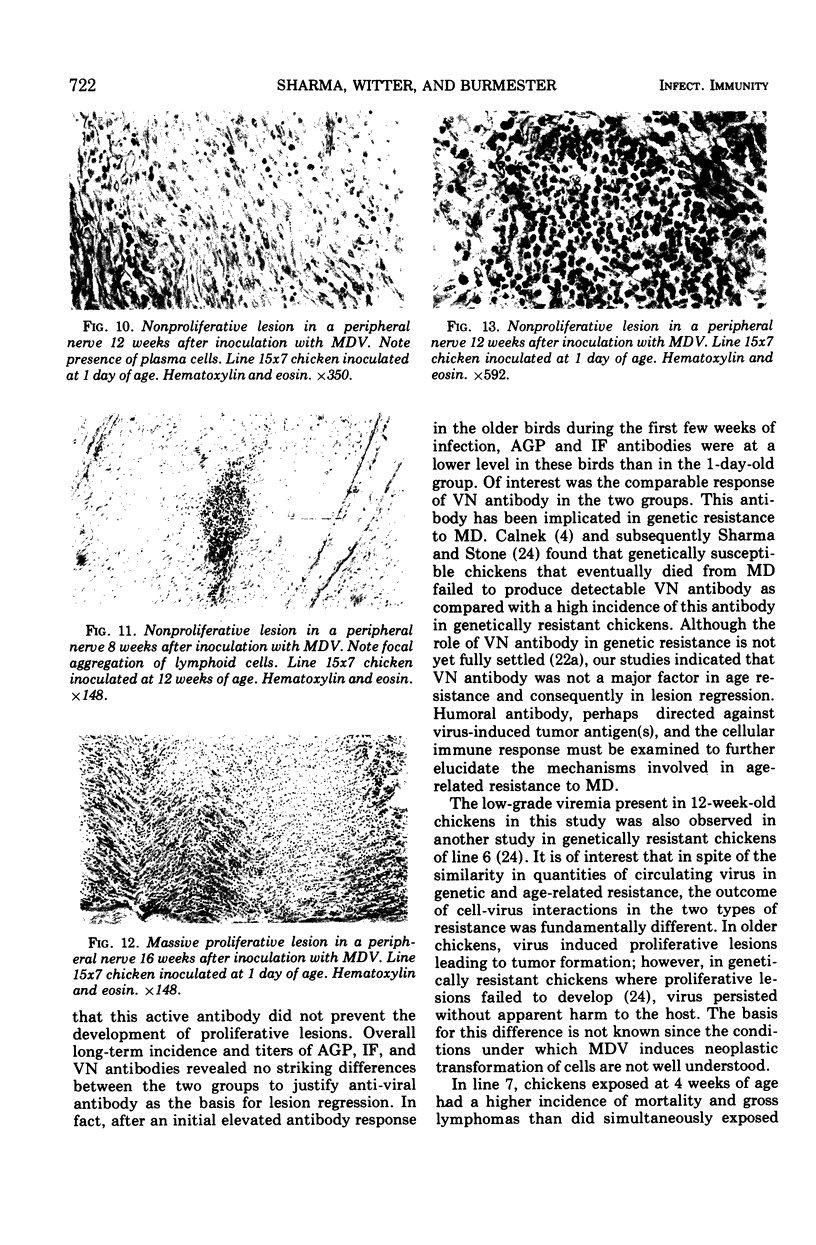
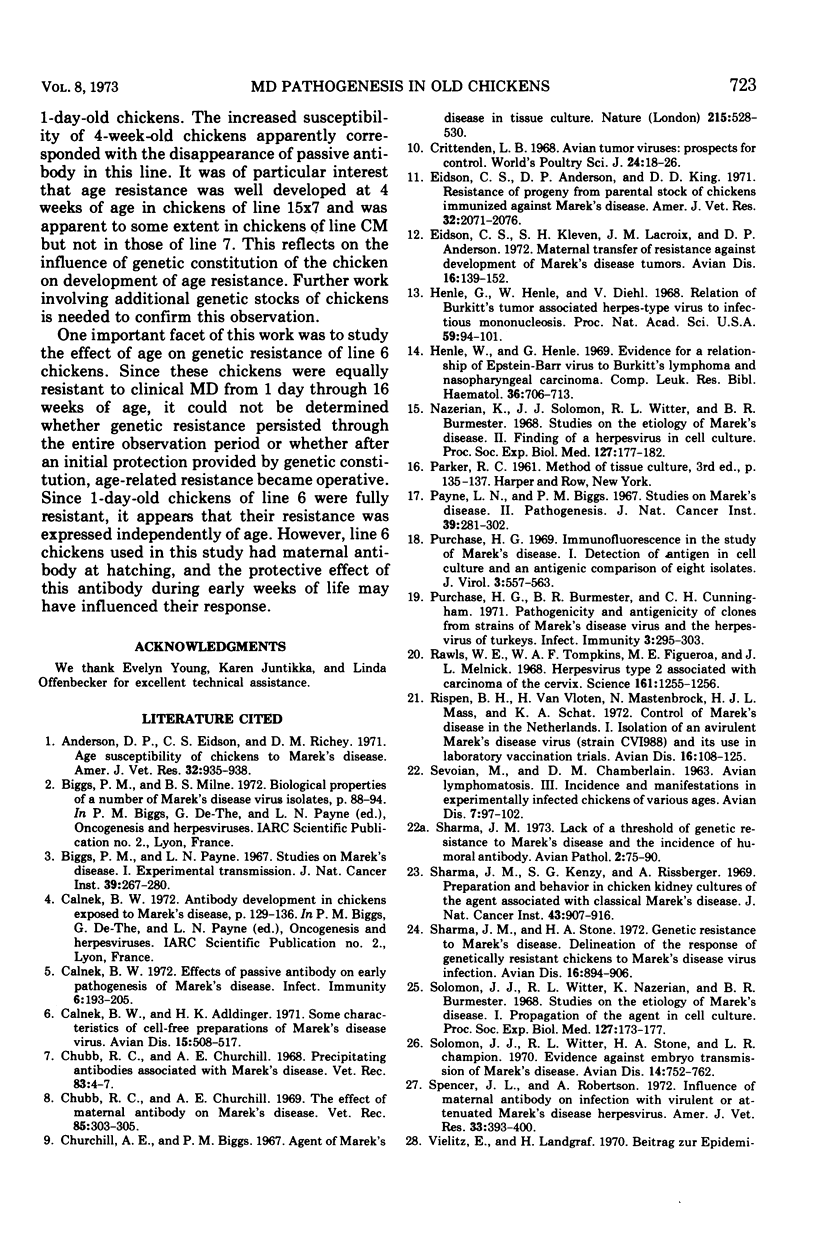
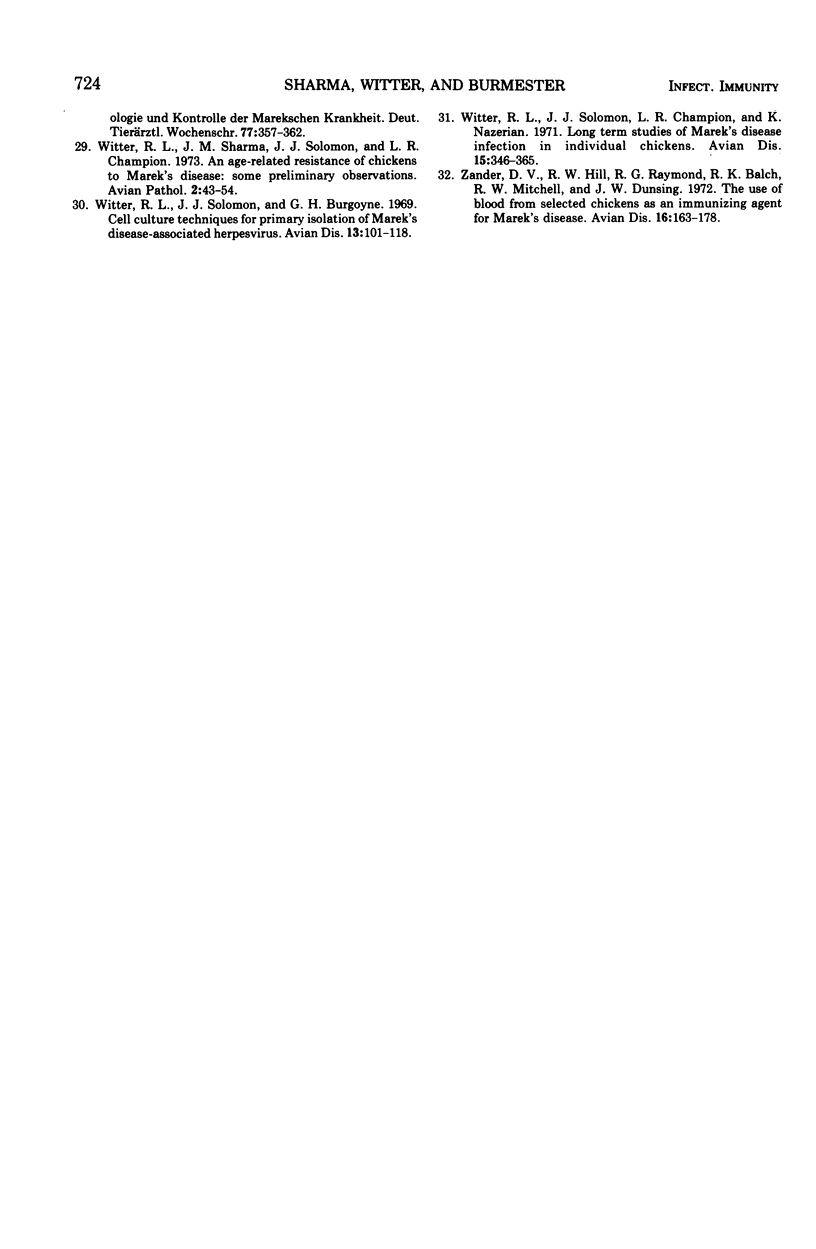
Images in this article
Selected References
These references are in PubMed. This may not be the complete list of references from this article.
- Anderson D. P., Eidson C. S., Richey D. J. Age susceptibility of chickens to Marek's disease. Am J Vet Res. 1971 Jun;32(6):935–938. [PubMed] [Google Scholar]
- Calnek B. W., Adldinger H. K. Some characteristics of cell-free preparations of Marek's disease virus. Avian Dis. 1971 Jul-Sep;15(3):508–517. [PubMed] [Google Scholar]
- Calnek B. W. Effects of passive antibody on early pathogenesis of Marek's disease. Infect Immun. 1972 Aug;6(2):193–198. doi: 10.1128/iai.6.2.193-198.1972. [DOI] [PMC free article] [PubMed] [Google Scholar]
- Chubb R. C., Churchill A. E. Effect of maternal antibody on Marek's disease. Vet Rec. 1969 Sep 13;85(11):303–305. doi: 10.1136/vr.85.11.303. [DOI] [PubMed] [Google Scholar]
- Churchill A. E., Biggs P. M. Agent of Marek's disease in tissue culture. Nature. 1967 Jul 29;215(5100):528–530. doi: 10.1038/215528a0. [DOI] [PubMed] [Google Scholar]
- Crittenden L. B. Avian tumor viruses: prospects for control. Worlds Poult Sci J. 1968 Jan-Mar;24(1):18–36. doi: 10.1079/wps19680006. [DOI] [PubMed] [Google Scholar]
- Eidson C. S., Anderson D. P., King D. D. Resistance of progeny from parental stock of chickens immunized against Marek's disease. Am J Vet Res. 1971 Dec;32(12):2071–2076. [PubMed] [Google Scholar]
- Eidson C. S., Kleven S. H., LaCroix V. M., Anderson D. P. Maternal transfer of resistance against development of Marek's disease tumors. Avian Dis. 1972 Apr;16(1):139–152. [PubMed] [Google Scholar]
- Henle G., Henle W., Diehl V. Relation of Burkitt's tumor-associated herpes-ytpe virus to infectious mononucleosis. Proc Natl Acad Sci U S A. 1968 Jan;59(1):94–101. doi: 10.1073/pnas.59.1.94. [DOI] [PMC free article] [PubMed] [Google Scholar]
- Nazerian K., Solomon J. J., Witter R. L., Burmester B. R. Studies on the etiology of Marek's disease. II. Finding of a herpesvirus in cell culture. Proc Soc Exp Biol Med. 1968 Jan;127(1):177–182. doi: 10.3181/00379727-127-32650. [DOI] [PubMed] [Google Scholar]
- Purchase H. G., Burmester B. R., Cunningham C. H. Pathogenicity and Antigenicity of Clones from Strains of Marek's Disease Virus and the Herpesvirus of Turkeys. Infect Immun. 1971 Feb;3(2):295–303. doi: 10.1128/iai.3.2.295-303.1971. [DOI] [PMC free article] [PubMed] [Google Scholar]
- Purchase H. G. Immunofluorescence in the study of Marek's disease. I. Detection of antigen in cell culture and an antigenic comparison of eight isolates. J Virol. 1969 Jun;3(6):557–565. doi: 10.1128/jvi.3.6.557-565.1969. [DOI] [PMC free article] [PubMed] [Google Scholar]
- Rawls W. E., Tompkins W. A., Figueroa M. E., Melnick J. L. Herpesvirus type 2: association with carcinoma of the cervix. Science. 1968 Sep 20;161(3847):1255–1256. doi: 10.1126/science.161.3847.1255. [DOI] [PubMed] [Google Scholar]
- Rispens B. H., van Vloten H., Mastenbroek N., Maas H. J., Schat K. A. Control of Marek's disease in the Netherlands. I. Isolation of an avirulent Marek's disease virus (strain CVI 988) and its use in laboratory vaccination trials. Avian Dis. 1972 Apr;16(1):108–125. [PubMed] [Google Scholar]
- Sevoian M., Chamberlain D. M. Avian lymphomatosis. 3. Incidence and manifestations in experimentally infected chickens of various ages. Avian Dis. 1963 Feb;7(1):97–102. [PubMed] [Google Scholar]
- Sharma J. M., Kenzy S. G., Rissberger A. Propagation and behavior in chicken kidney cultures of the agent associated with classical Marek's disease. J Natl Cancer Inst. 1969 Oct;43(4):907–916. [PubMed] [Google Scholar]
- Sharma J. M., Stone H. A. Genetic resistance to Marek's disease. Delineation of the response of genetically resistant chickens to Marek's disease virus infection. Avian Dis. 1972 Jul-Sep;16(4):894–906. [PubMed] [Google Scholar]
- Solomon J. J., Witter R. L., Nazerian K., Burmester B. R. Studies on the etiology of Marek's disease. I. Propagation of the agent in cell culture. Proc Soc Exp Biol Med. 1968 Jan;127(1):173–177. doi: 10.3181/00379727-127-32649. [DOI] [PubMed] [Google Scholar]
- Solomon J. J., Witter R. L., Stone H. A., Champion L. R. Evidence against embryo transmission of Marek's disease virus. Avian Dis. 1970 Nov;14(4):752–762. [PubMed] [Google Scholar]
- Spencer J. L., Robertson A. Influence of maternal antibody on infection with virulent or attenuated Marek's disease herpesvirus. Am J Vet Res. 1972 Feb;33(2):393–400. [PubMed] [Google Scholar]
- Witter R. L., Solomon J. J., Burgoyne G. H. Cell culture techniques for primary isolation of Marek's disease-associated herpesvirus. Avian Dis. 1969 Feb;13(1):101–118. [PubMed] [Google Scholar]
- Witter R. L., Solomon J. J., Champion L. R., Nazerian K. Long-term studies of Marek's disease infection in individual chickens. Avian Dis. 1971 Apr-Jun;15(2):346–365. [PubMed] [Google Scholar]
- Zander D. V., Hill R. W., Raymond R. G., Balch R. K., Mitchell R. W., Dunsing J. W. The use of blood from selected chickens as an immunizing agent for Marek's disease. Avian Dis. 1972 Apr;16(1):163–178. [PubMed] [Google Scholar]



